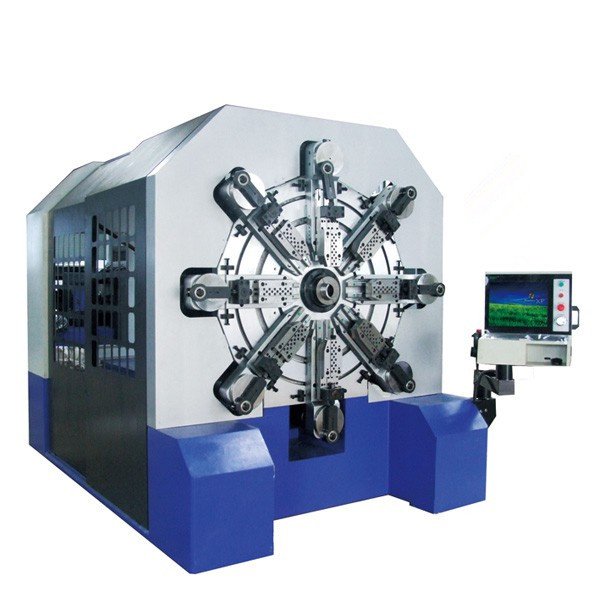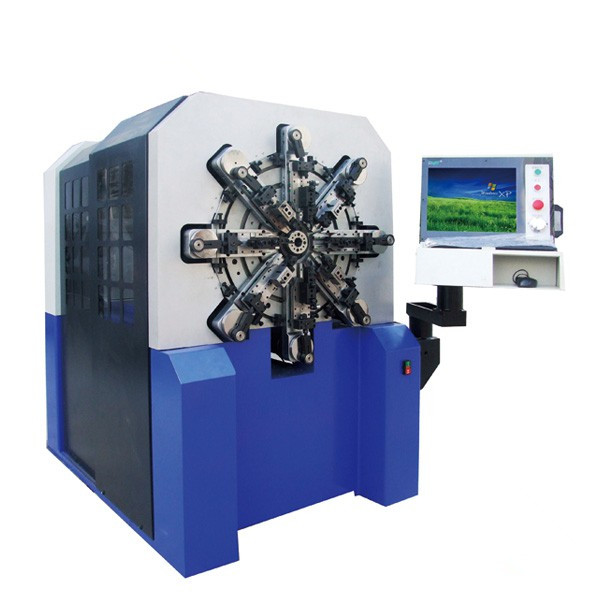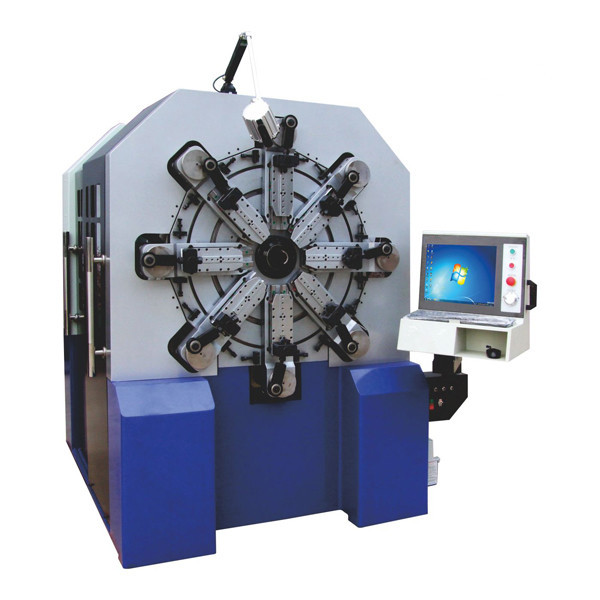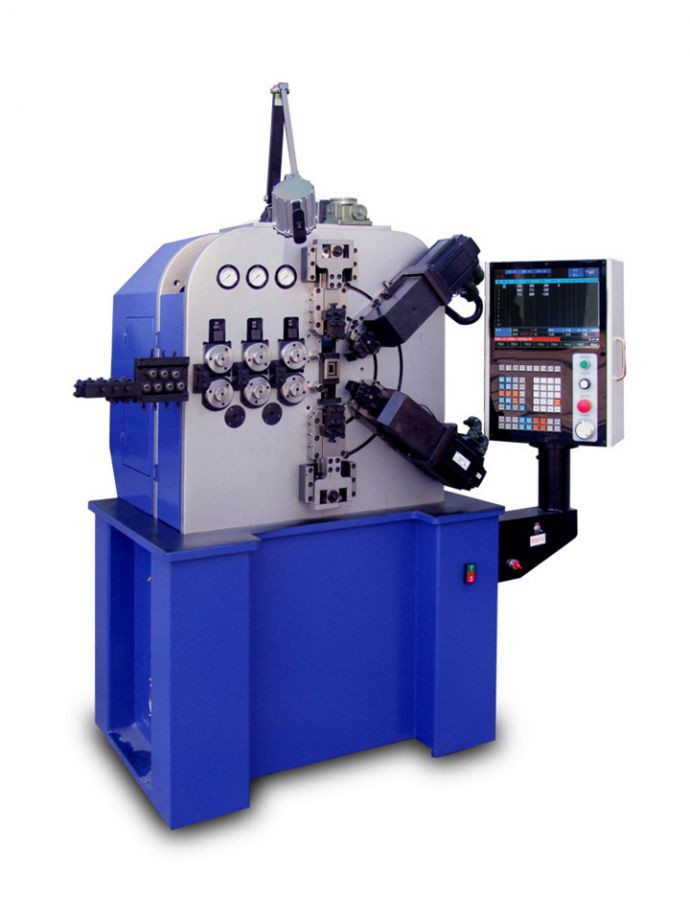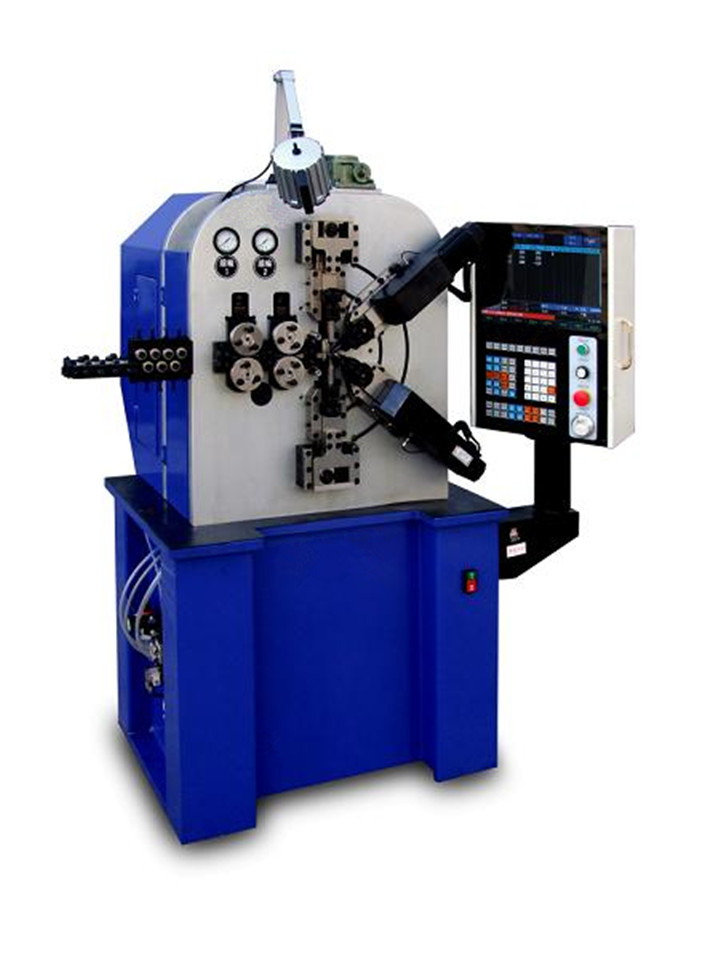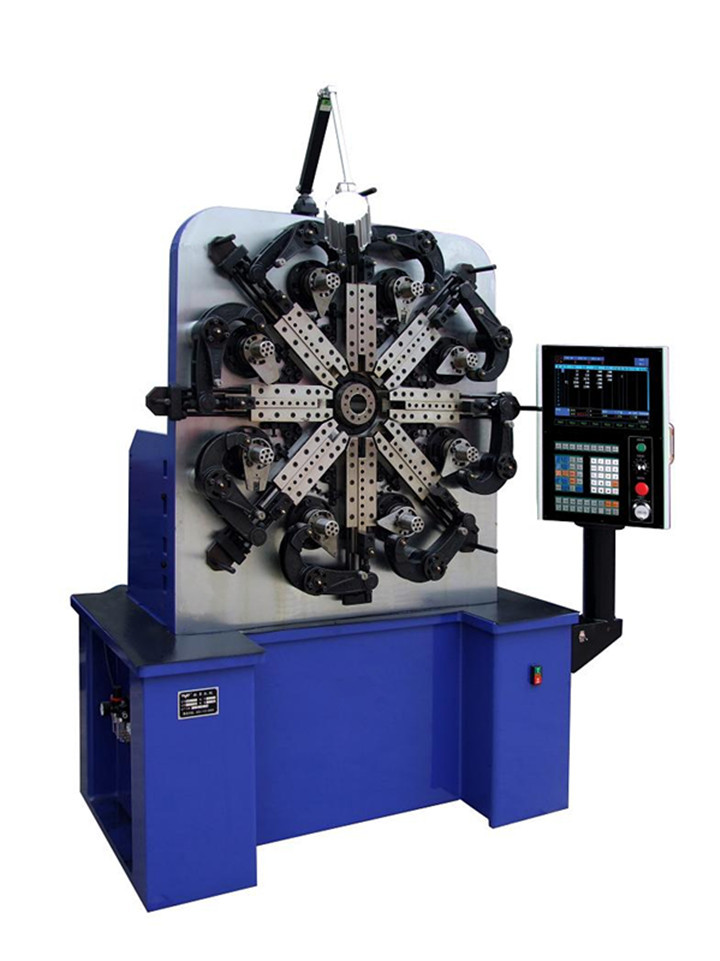
Products
-
Revolutionary 12 axes spring & wire forming machines that allow spring manufacturers to massively produce a variety of springs with high speed and accuracy!
-
Special camless design equipped with SAMCO’s free arm technolgy that enables our series of spring machines to easily produce all kinds of difficult springs that is 30% or more efficient than traditional cam type spring former.
-
Special camless design equipped with SAMCO’s free arm technolgy that enables our series of spring machines to easily produce all kinds of difficult springs that is 30% or more efficient than traditional cam type spring former.
-
CNC8660 is 6-axis compression spring machine, this CNC spring machine for making compression spring, oil seal spring ,battery spring, torsion machine, etc
-
CNC8635 is six-axis compression spring machine, this CNC spring machine for making compression spring, oil seal spring ,battery spring, torsion machine, etc
-
SAMCO supply spring forming machine, CNC8335 is a 3 axis CNC spring machine, can make compression spring, tension spring, torsion spring, coiling spring and wire forms and etc

Servos and Selsyns
One barrier to complete automation was the required tolerances of the machining process, which are routinely on the order of thousands of an inch. Although it would be relatively easy to connect some sort of control to a storage device like punch cards, ensuring that the controls were moved to the correct position with the required accuracy was another issue. The movement of the tool resulted in varying forces on the controls that would mean a linear output would not result in linear motion of the tool. The key development in this area was the introduction of the servo, which produced highly accurate measurement information. Attaching two servos together produced a selsyn, where a remote servo's motions accurately matched by another. Using a variety of mechanical or electrical systems, the output of the selsyns could be read to ensure proper movement had occurred. The first serious suggestion that selsyns could be used for machining control was made by Ernst F. W. Alexanderson, a Swedish immigrant to the U.S. working at General Electric (GE). Alexanderson had worked on the problem of torque amplification that allowed the small output of a mechanical computer to drive very large motors, which GE used as part of a larger gun laying system for US Navy ships. Like machining, gun lay requires very high accuracies, less than a degree, and the motion of the gun turrets was non-linear. In November 1931 Alexanderson suggested to the Industrial Engineering Department that the same systems could be used to drive the inputs of machine tools, allowing it to follow the outline of a template without the strong physical contact needed by existing tools like the Keller Machine. He stated that it was a "matter of straight engineering development." However, the concept was ahead of its time from a business development perspective, and GE did not take the matter seriously until years later, when others had pioneered the field.




